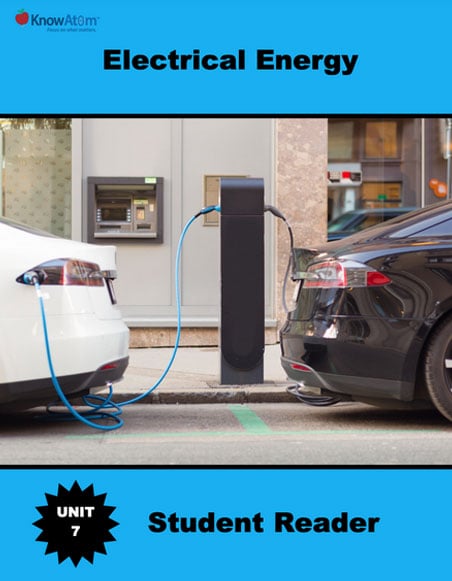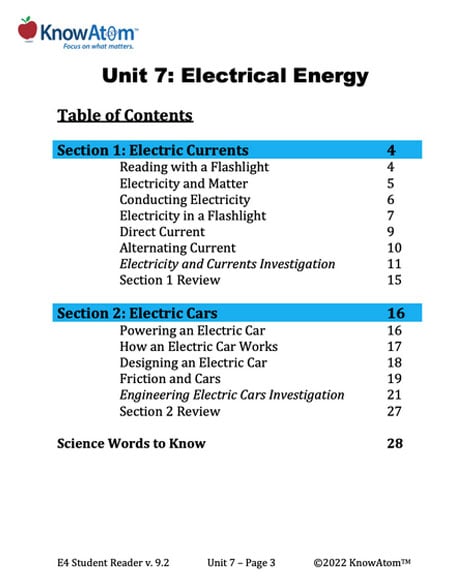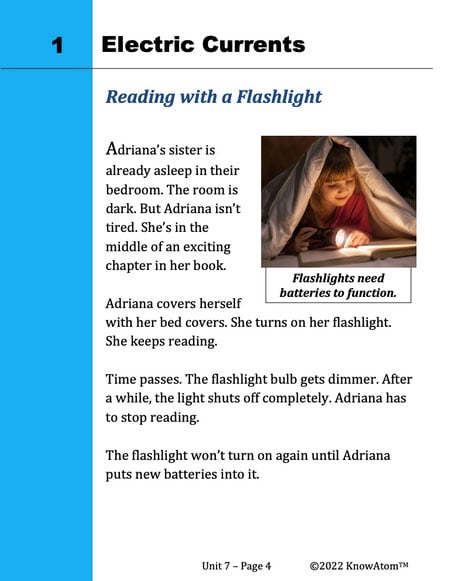Science background provides teachers with more in-depth information about the phenomena students explore in this unit about electrical energy.
A circuit must be complete and unbroken to function properly. If there is a break in the circuit, it is open and the electricity cannot move. The air between the open part of the circuit will not conduct or transport the electrons. The wire must be closed to restart the electron flow. There are four main parts of a circuit.
1. A battery is a source of energy that pushes electrons through a circuit. Batteries hold stored chemical energy that can be turned into electrical energy when they are put into circuit. The battery provides the force that pushes the electrons through the circuit. All batteries have a negative end and a positive end. Electrons travel from the negative end through the circuit to the positive end. The negatively charged electrons are attracted to the positive side of the battery, and this attraction pulls the electrons toward the positive side of the battery. As the electrons move, they carry electrical energy.
2. Wires create a path of conducting material for electrons to travel. Energy moves from the battery through the conductive wires.
3. The wires in a circuit are attached to an object that can convert the electric energy to do work (any change in position, speed, or state of matter due to force). For example, a motor is a machine that converts an input of energy into an output of kinetic energy. When a motor is part of a circuit, the electrical energy is converted into kinetic energy, making the motor spin. All circuits must include something that can do work. Without this part, the electricity will cause danger by overheating the circuit, causing a short circuit.
4. A switch opens and closes a circuit to control electron flow. Electrons flow when a circuit is closed (on). Electrons cannot flow when a circuit is open (off).
There are different ways that circuits can be designed. For example, a simple circuit has one path and one object that can do work.
A series circuit uses one path but has more than one piece of work in the path of the same electrons. This means in a series circuit with two light bulbs, the electricity moves from one light bulb to the next before it returns to the energy source. If one bulb stops working, it breaks the circuit so the electricity cannot continue on its path.
Both simple and series circuits powered by batteries use a kind of electric current called direct current. Direct current (DC) is electric current that is constantly flowing in one direction from a negative to a positive charge.
Batteries always create a direct current because the electrons always flow from the negative side to the positive side. DC is useful for carrying electricity over short distances. In this unit, students will observe direct current in all of their circuits.
Alternating current (AC) is electric current that changes its direction many times every second. Alternating current is easier and cheaper to send over long distances, so power plants use it to send electricity to homes.










